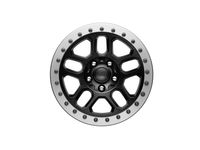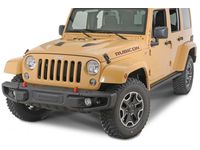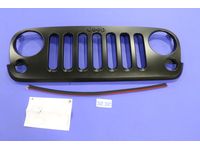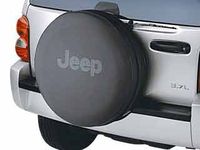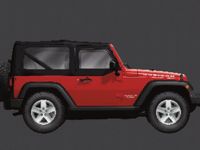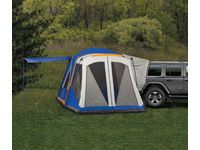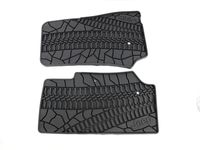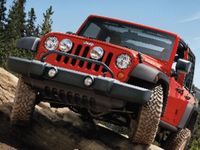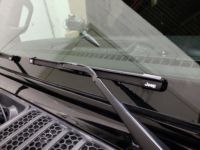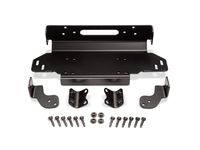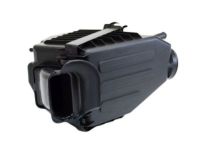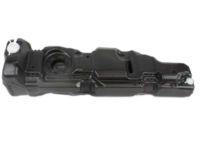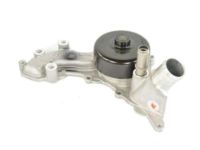
Why choose MoparPartsGiant
- Fast Delivery
Your Jeep Wrangler deserves only genuine parts from MoparPartsGiant.com. There's zero risk involved when buying from us because all our Jeep Wrangler parts are expedited directly from authorized dealers and backed by the manufacturer's warranty. For years, we've been the #1 online parts store. Interested in faster shipping? We offer expedited shipping on corresponding orders!
- Dedicated Service
Our outstanding customer service team is here to help you by email, live chat, or phone call with any inquiries regarding your purchase. Dedicated representatives are standing by to assist you with your shopping needs. With a complete Jeep Wrangler parts catalog and a full selection of inventory, your parts are ready to be expedited anywhere in the nation without delays.
- Unbeatable Prices
For any genuine parts you need for standard maintenance or repair, we carry them. With our unbelievably low prices on parts, you won't go anywhere else for Jeep Wrangler parts. We are your one-stop shop for Jeep Wrangler parts without breaking the bank!
Popular Genuine Jeep Wrangler Parts
- Engine Parts View More >
- Electrical Parts View More >
- Fuel Parts View More >
- Body - Sheet Metal Except Doors Parts View More >
- Cooling Parts View More >
- Steering Parts View More >
- Interior Trim Parts View More >
- Brakes Parts View More >
- Transmission Parts View More >
- Suspension & Drive Parts View More >
- Emission Systems Parts View More >
- Exhaust Parts View More >
Shop Genuine Jeep Wrangler Parts with MoparPartsGiant.com
The Jeep Wrangler is a mid-size compact SUV with AWD, a single axle, and an open roof. The convertible with a removable hard or soft top is standard. In 2005 both automatic and 6-speed manual transmissions were available. Starting in 2007, the long Wrangler became a four-door model, offering more space. The Wrangler was launched as a new model in 1986 that came with a flat grille that was flush with the front fender. The grille is rounded at the top of the latest Wrangler and drops straight down from the center. It shortens the canopy and lengthens the wings. This angle to the grille has been further reduced. There were long and short wheelbase versions for the civilian trade. The round headlamps of classic models also appear on the second-generation Wrangler. Towards the end of the TJ's life cycle, the unlimited long-wheelbase model was introduced in 2004. In addition to the traditional two-door model, a four-door "Unlimited" model was introduced. By mid-2017, four-door models accounted for three-quarters of the new Wranglers on the market. Other transmissions and the V6 Pentastar are available for the JL model. The lineup included an upgraded 8-speed automatic transmission, a 2.0L turbocharged motor, and a 3.6L Pentastar V6 gasoline motor. For the 2021 model year, Jeep has unveiled a plug-in hybrid version of the Wrangler. The Wrangler 4xe entered production in early 2021 and has a range of around 65 kilometers in pure electric mode. It won the 2009 "Best Sales Value" award in the sport utility vehicle category. The 2007 Jeep Wrangler set a Guinness World Record for the highest altitude reached by an AWD car. The AWD Jeep Wrangler convertible ranks fourth among the top ten vehicles with the highest resale value.
The Jeep Wrangler, a prominent four-wheel-drive off-road vehicle, is susceptible to certain common problems due to its exposure to extreme road conditions. These issues often manifest as electrical or transmission problems. Electrical issues often involve the persistent illumination of the Check Engine Light, accompanied by a decline in engine performance, poor gas mileage, rough idling, engine stalling, or misfiring. These issues are often due to faulty oxygen sensors or the engine control module. The power window and A/C switches are also prone to malfunction. Transmission issues, on the other hand, present as difficulty shifting gears, unusual noises from the transmission area, leakage of reddish fluid, and inconsistent operation of the four-wheel-drive system, often indicating a worn transfer case seal. To enhance the Wrangler's lifespan, it's crucial to maintain all components, including the brake system, especially the easily-worn brake line. Also, replacing the air filter periodically can ensure a healthy and fresh cabin environment.
In terms of quality, OEM parts emerge as the premier choice. These components are directly manufactured by Jeep, adhering to stringent factory guidelines, and are subjected to rigorous quality control procedures during production. Should you require any OEM Jeep Wrangler parts, including Doors, Door Mirrors And Related Parts, Air Conditioners & Heater, our website is the ideal online destination. We provide a vast selection of genuine Jeep Wrangler parts, such as Wiper & Washers And Cylinder & Keys, Differential And Drive Line at the most competitive prices. Here, you will enjoy a hassle-free shopping experience due to our unbeatable prices, swift delivery, manufacturer's warranty, and straightforward return policy.
Jeep Wrangler Parts Questions & Answers
- Q: How to Remove the Air Filter Box on a Jeep Wrangler?A: To remove the air intake assembly on a 2.5L engine, start by detaching the cable from the negative battery terminal. Remove the air filter and lift the clips or band clamp. Detach the warm air hose and label and remove any vacuum hoses. For a 4.0L engine, detach the cable and flexible air duct. Label and detach all vacuum hoses and detach the heat riser tube. Remove the upper half of the air filter box lid and the air filter element. For a 4.2L engine, detach the cable and flexible ambient air duct. Remove the wing nut, cover, and filter element. Label and detach all hoses from the air filter box. For V6 engines, detach the cable and remove the engine cover. Disconnect the IAT sensor connector and loosen the crankcase ventilation hose. Loosen the clamp and disconnect the hose. On 3.6L engines, detach the coolant hose from the retainers. Remove the mounting bolt(s) and lift the air filter box. Firmly pull the air filter box, lid, and intake hose upwards to disengage the pin(s) and remove from the vehicle.
- Q: How Should Fuel Tank or Filler Neck Repairs Be Carried Out on Jeep Wrangler?A: All repairs to the fuel tank or filler neck should be carried out by a professional with experience in this critical and potentially dangerous work. Even after cleaning and flushing the fuel system, explosive fumes can remain and ignite during tank repair. If the fuel tank is removed from the vehicle, it should not be placed in an area where sparks or open flames could ignite the fumes. Extra caution should be taken in garages with gas appliances, as they could cause an explosion.
- Q: How Can You Check the Operation of a Water Pump on Jeep Wrangler?A: Squeeze the upper radiator hose to check for pressure surge. Check for coolant leaks from the weep or vent hole. Listen for a howling sound at the front of the engine and feel for shaft wear if the water pump pulley is rocked up and down. Don't mistake drivebelt slippage for bearing failure.


















































